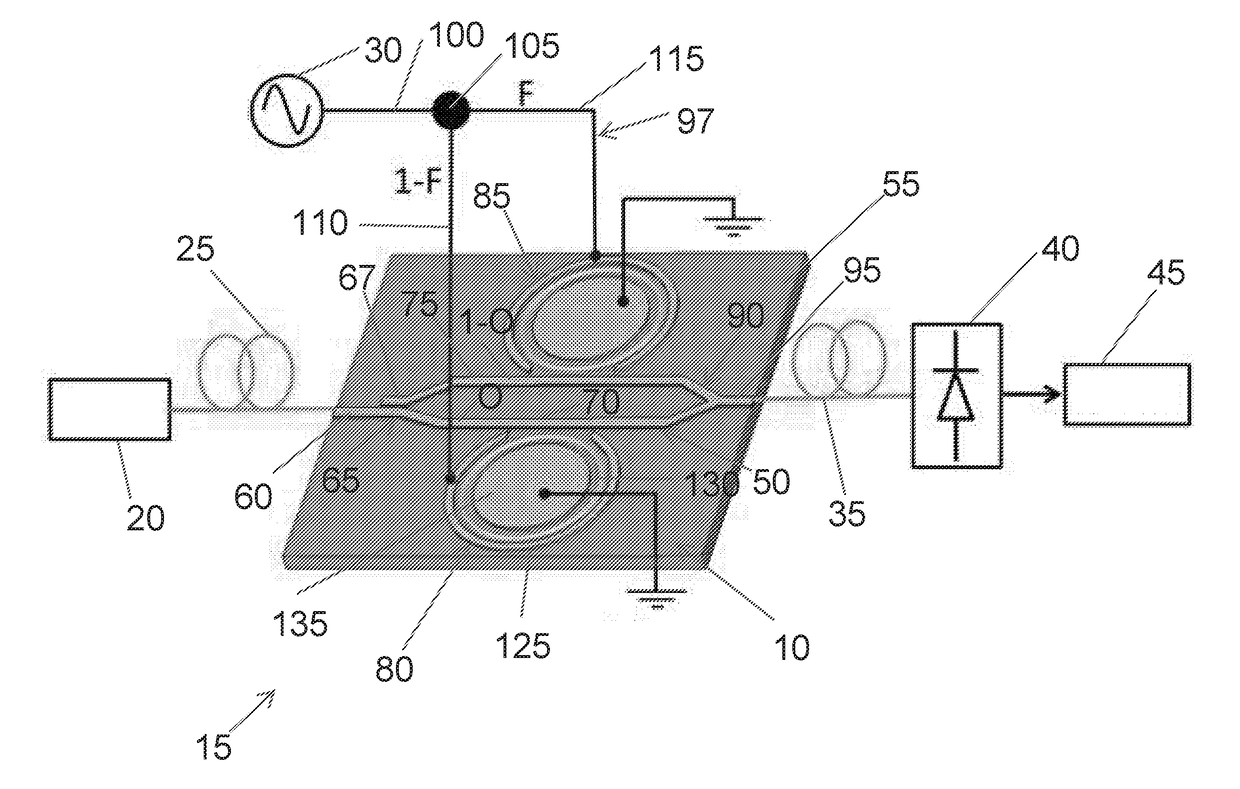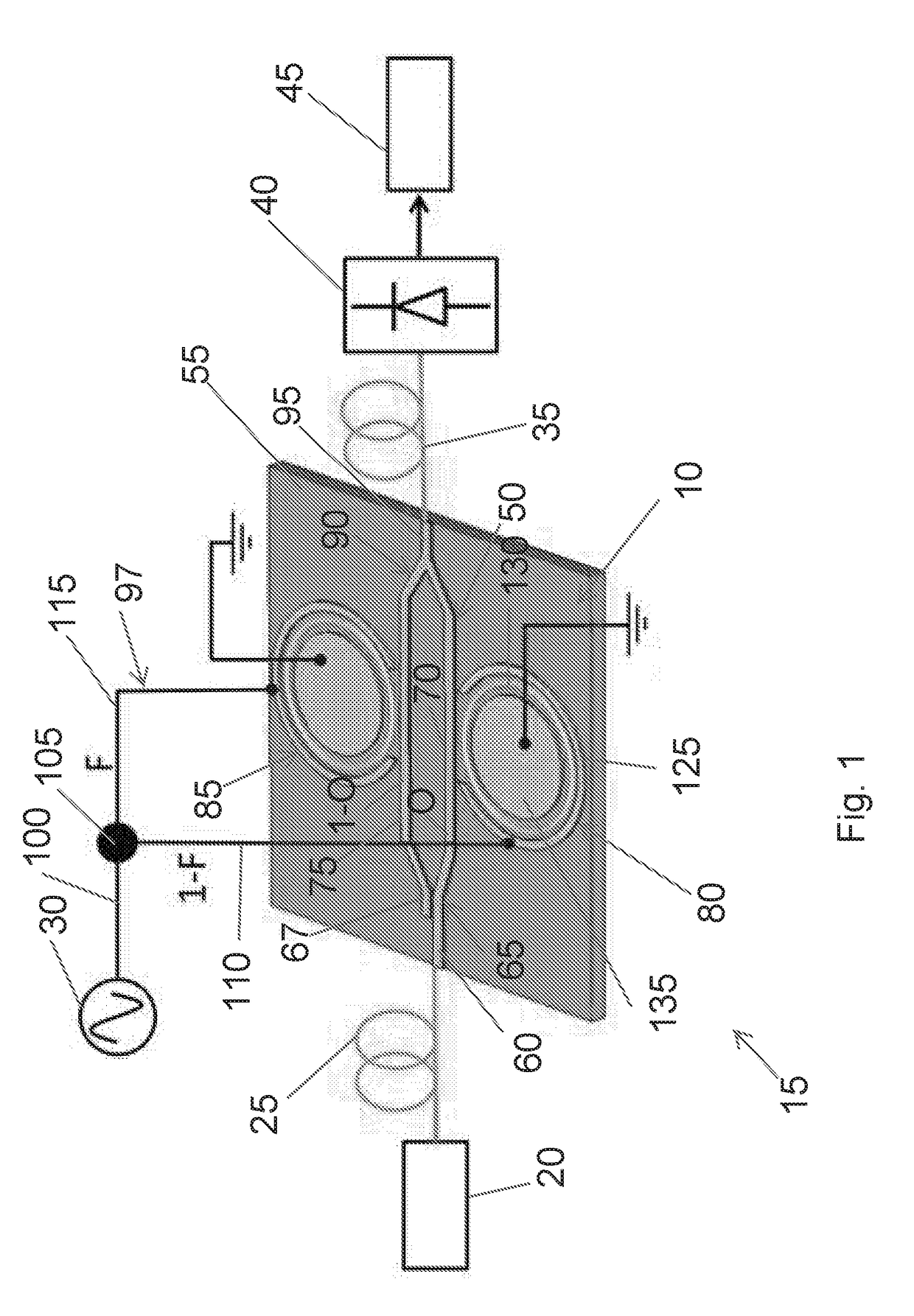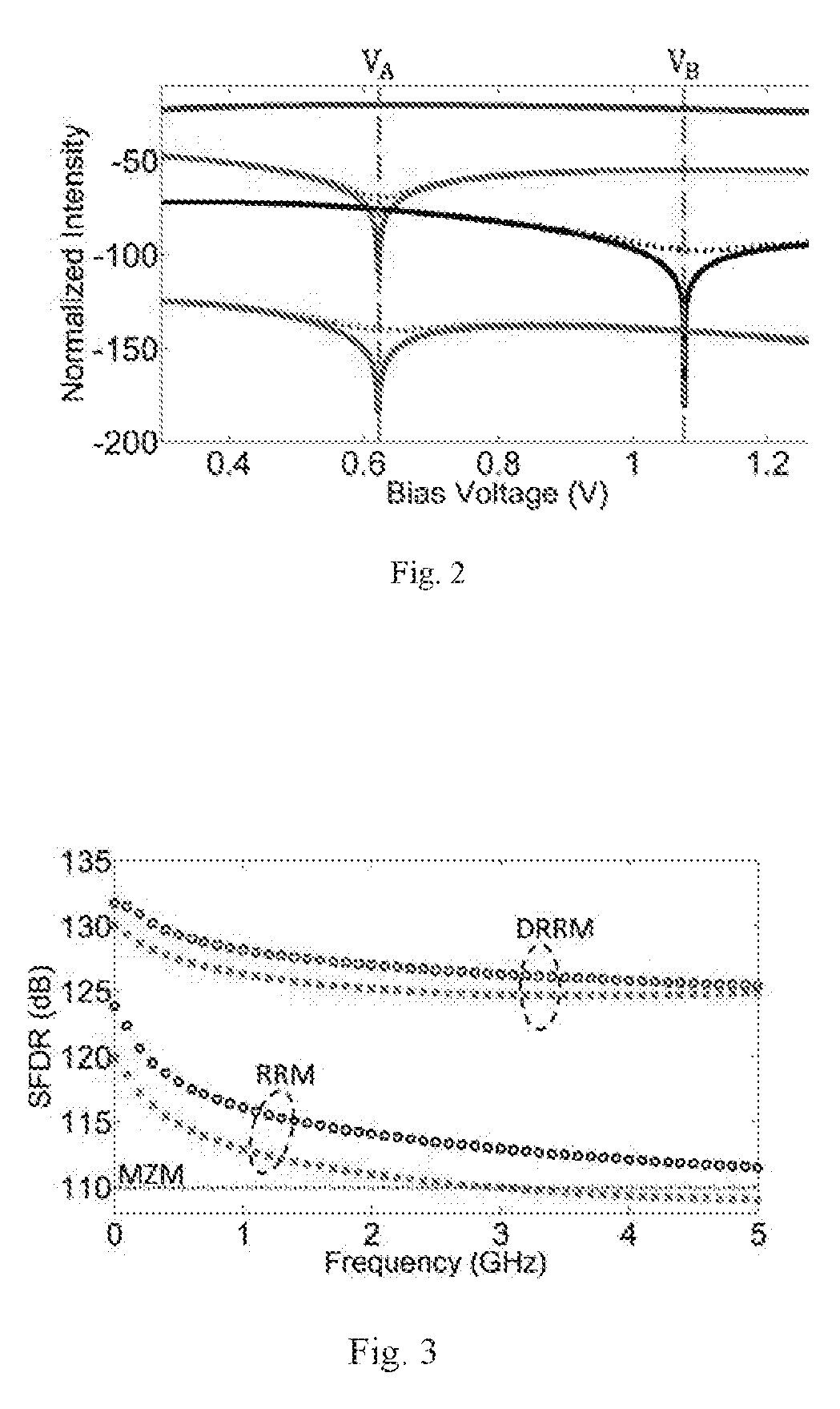Electro-optic modulator, microwave photonic link including an electro-optic modulator, and method of communicating a signal with an electro-optic modulator
a microwave photonic link and modulator technology, applied in the field of electrooptic modulators, can solve the problems of limited success in achieving a highly linear modulator for microwave photonic links, nonlinear distortions, and nonlinear distortions, and achieve high spur-free dynamic range, enhance linearity of single ring resonator design, and wide bandwidth
- Summary
- Abstract
- Description
- Claims
- Application Information
AI Technical Summary
Benefits of technology
Problems solved by technology
Method used
Image
Examples
Embodiment Construction
[0015]Before any embodiments of the invention are explained in detail, it is to be understood that the invention is not limited in its application to the details of construction and the arrangement of components set forth in the following description or illustrated in the following drawings. The invention is capable of other constructions and of being practiced or of being carried out in various ways.
INTRODUCTION
[0016]Microwave photonic links (MPLs) are critical for applications such as wireless-access networks, antenna remoting, and video distribution networks. See, for example, “Wireless future drives microwave photonics,”Nat Photon, vol. 5, pp. 724-724, 12 / / print 2011, M. L. VanBlaricum, “Photonic systems for antenna applications,”Antennas and Propagation Magazine, IEEE, vol. 36, pp. 30-38, 1994, and M. Nazarathy, J. Berger, A. J. Ley, I. M. Levi, and Y. Kagan, “Progress in externally modulated AM CATV transmission systems,”Lightwave Technology, Journal of, vol. 11, pp. 82-105, 1...
PUM
| Property | Measurement | Unit |
|---|---|---|
| frequencies | aaaaa | aaaaa |
| frequencies | aaaaa | aaaaa |
| radio frequency operating frequency | aaaaa | aaaaa |
Abstract
Description
Claims
Application Information
 Login to View More
Login to View More - R&D
- Intellectual Property
- Life Sciences
- Materials
- Tech Scout
- Unparalleled Data Quality
- Higher Quality Content
- 60% Fewer Hallucinations
Browse by: Latest US Patents, China's latest patents, Technical Efficacy Thesaurus, Application Domain, Technology Topic, Popular Technical Reports.
© 2025 PatSnap. All rights reserved.Legal|Privacy policy|Modern Slavery Act Transparency Statement|Sitemap|About US| Contact US: help@patsnap.com



